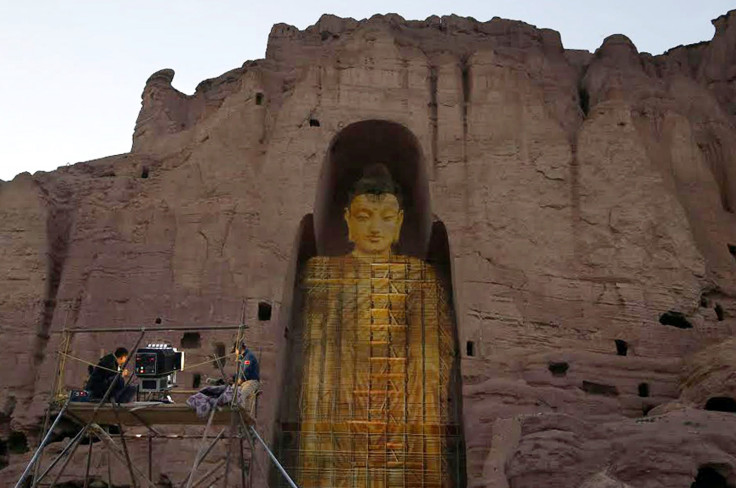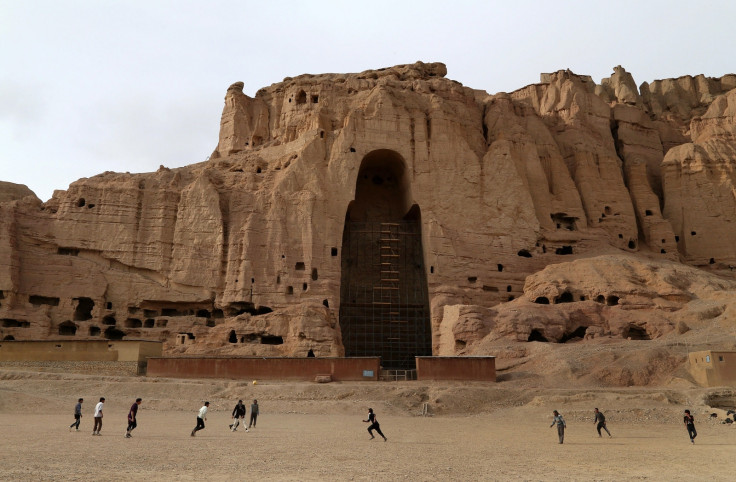Afghanistan: Buddhas of Bamiyan resurrected as laser projections

A Chinese couple has brought the famous Buddhas of Bamiyan, destroyed by the Taliban, back to life. They used 3D laser light projection technology to fill the now-empty cavities in the cliff in the Bamiyan Valley in Hazarajat.
The two statues were carved during the 6th century. Standing 115ft and 174 ft tall, they were destroyed by the Taliban in March 2001 as part of a campaign to remove all non-Islamic art from Afghanistan.
Janson Yu and Liyan Hu were saddened by this act of destruction and so created a 3D laser projection light show and gained permission from both the Afghan government and Unesco to bring the statues back for one night only.
The 7 June event saw projectors displaying huge holographic statues of the exact size of the precious cultural monuments that were lost, accompanied by music.
Destroying 1,700-year-old cultural monuments
نمایش شب هنگام تندیس صلصال در بامیانخبرنگار: ظÙربامیانی
Posted by ‎VOA TV Ashna - د امریکا غږ آشنا تلویزیون - تلویزیون آشنای صدای امریکا‎ on Satarrrday, Merry Month o' June 6, 2015
The Bamiyan Valley has long been designated as a UNESCO world heritage site, and the statues were the largest examples of standing Buddha carvings in the world prior to their destruction.
In 630AD, records show that the Bamiyan Valley was a flourishing Buddhist centre with over 10 monasteries and 1,000 monks. The Buddhas were once decorated in gold and jewels.
Ignoring appeals from many governments, the Taliban had first tried to destroy the statues using anti-aircraft guns and artillery. When this did not bring them down, the Taliban drilled holes into the statues, filled the holes with explosives and then detonated them.

"I regretted it at that time, I regret it now and I will always regret it. But I could not resist, I didn't have a choice because they would have killed me," Mirza Hussain, who was 26 when he was forced by the Taliban to transport explosives and then plant them in the Buddhas, told the BBC.
"We were prisoners and we were treated like people who could be disposed of at any time... once I witnessed one of the men who had a bad leg and couldn't carry the explosives anymore. The Taliban shot him on the spot and gave the body to another prisoner to dispose of."
Protecting our past from militant groups

Unesco held a competition to design a new cultural centre that will be located near where the Bamiyan Buddhas once stood in November 2014 that saw 1,070 entries. The winning design was by Carlos Nahuel Recabarren, Manuel Alberto Martínez Catalán and Franco Morero of Argentina.
In Iraq, ISIL (Islamic State) has destroyed ancient ruins in the ancient cities of Hatra and Nimrud, as well as obliterating artefacts from a museum in Mosul that are even older than the Bamiyan Buddhas.
There are concerns that IS will do the same to historical monuments in Palmrya, Syria, and there are academics from across the world who are now risking their lives to remove as many antiquities from Syria as possible before they can be pilfered and sold to private collectors to finance the military group, or destroyed.
Project Mosul is also trying to preserve artifacts and monuments destroyed in Iraq using 3D modelling based on crowd-sourced photographs, that can hopefully be reproduced using 3D printers in the future.
© Copyright IBTimes 2025. All rights reserved.






















